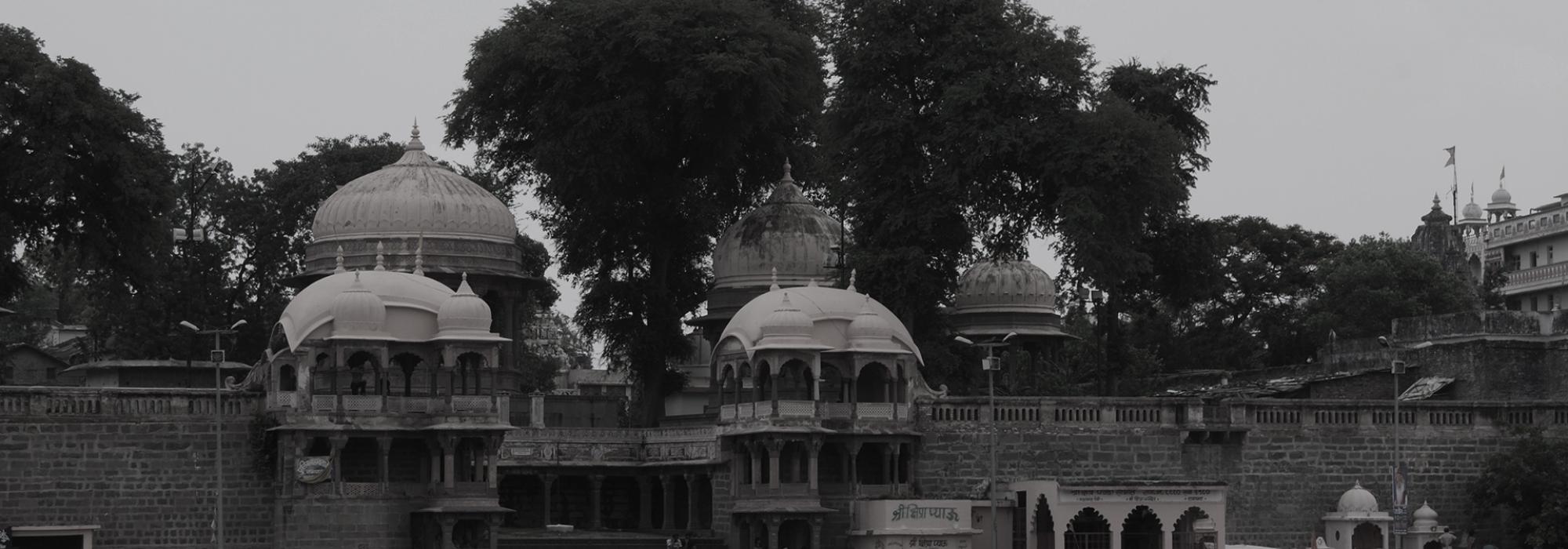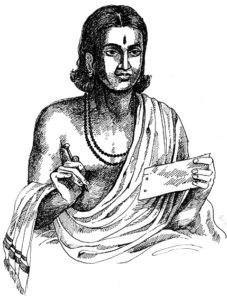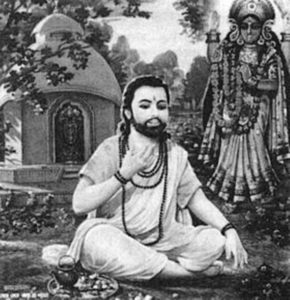India is home to a unique and vibrant civilization. It is unique for being the only ancient civilization to have survived the test of time. The ancient Egyptian, Mesopotamian, and Assyrian cultures are only of academic interest today. Even the not-so-ancient Greek civilization has been wiped out clean from its homeland. But the Vedic civilization of India, which has its origins in the Sindhu-Saraswati river basins, is very much alive today. This happened because some of the most fundamental ideas of Vedic culture and civilization were disseminated among the people of this ancient land by way of powerful symbols, festivals, and their manifestations in the various art forms of this country.
Kālidāsa is the most beautiful, and yet, the most authentic representative of this phenomenon of cultural pollination. For at least 1600 years, our culture has unanimously conferred upon him the title of Kavikulaguru – the master of all poets. And ever since, every great poet or critic has seen it fit to pay glowing tributes to his contributions. For the sake of illustration, we can look at a few of them.Bāṇabhaṭṭa (7th century CE), the greatest master of prose in Sanskrit and probably second only to Kālidāsa, says:
निर्गतासु न वा कस्य
कालिदासेषु सूक्तिषु |
प्रीतिर्मधुरसांद्रासु
मञ्जरीष्विव जायते ||
“Is there someone who will not be delighted with Kālidāsa’s words in just the same way as being surrounded by a dense foliage of nectar-rich flowers?”
Gaṅgādevī (14th century CE), the daughter-in-law of Bukkarāya, one of the first kings of the great Vijayanagar empire, says:
दासतां कालिदासस्य
कवयः के न विभ्रति ।
इदानीमपि तस्यार्था-
नुपजीव्यन्त्यमी यतः ॥
“I wonder if there are any poets at all who are not indebted to Kālidāsa. Even today, they are making a living out of his ideas.”
Since his time, many have tried and failed to reach the heights that he so effortlessly scaled on a regular basis. This is summed up by another great representative of Indian culture and one of the founding pillars of the great Vijayanagar empire, Sāyaṇācārya (younger brother of sage Vidyāraṇya) –
पदवीं कालिदासस्य
ललितां मृदुलैः पदैः ।
न शक्नुवन्त्यहो गन्तुं
पश्यन्तोऽपि कवीश्वराः ॥
“The path of Kālidāsa, littered with melodiously lucid words, is there for all to see. But Alas! Even as they are seeing it so clearly, none among the poets have been able to walk on the same path.”
Mallinātha Sūri, who has written a detailed commentary to Kālidāsa’s Raghuvaṃśam, Kumārasambhavam, and Meghadūtam, says:
कालिदासगिरां सारं
कालिदासः सरस्वती ।
चतुर्मुखोऽथवा साक्षाद्-
विदुर्नान्ये तु मादृशाः ॥
“The greatness and depth of Kālidāsa’s works can be understood and appreciated by Kālidāsa himself, Goddess Sarasvatī or Lord Brahmā; it cannot be understood by mere mortals like me.”
If this is the praise that the learned have heaped on Kālidāsa, the not-so-learned have created numerous legends to eulogize him. It is a credit to Kālidāsa’s greatness that his influence has percolated down to the commonest among the populace. According to one of the legends, Kālidāsa was a cowherd who became a great poet by the grace of Goddess Kāli and hence he adopted the name ‘Kālidāsa.’ This legend has been depicted in films made in many regional languages. Another legend says he was one of the nine gems in the court of King Vikramāditya, who is the person after whom one of the most important Indian calendar systems, the Vikrama śaka, has been named.
However, most of the legends about Kālidāsa are associated with King Bhoja of Dhārānagara, the present-day Dhar in Madhya Pradesh. King Bhoja himself is among the most celebrated kings of our land. He was a great warrior as well as a scholar in many disciplines. He is said to have composed eighty-four works and was the biggest obstacle for Mahmud of Ghazni, a notorious Muslim invader who frequently invaded our country. For these reasons, King Bhoja became legendary for the Indian populace. Hence the Indian mind thought it fit to associate one legend—Bhoja—with another, Kālidāsa. Most of these legends are documented in Bhojaprabandha, which is an entertaining work centred around King Bhoja and some of the interesting incidents in his life. Kālidāsa figures prominently in this work. Some of the stories about his relationships with courtesans don’t exactly serve to enhance his greatness, but that is the way of legends. They grow by contributions from all sections of society and each would be reflective of the qualities they adore. The only thing that is conclusively proven by the wide variety of legends about Kālidāsa is the popularity he enjoyed among all sections of the Indian population.
Kālidāsa: A Historical View
From a historical perspective, we know almost nothing of Kālidāsa. There are no records that tell us accurately where he lived and when. It is by speculating around secondary evidence that his time can be established. Since the Śunga king Agnimitra is the hero of one of Kālidāsa’s plays, it can be safely assumed that his time cannot be earlier than 1st century BCE. And because he is praised by Bāṇabhaṭṭa and the Aihole inscription of Ravikīrti, his time cannot be later than 7th century CE. Today, it is largely agreed that he must have lived sometime between the 4th and 5th century CE, in the Gupta Golden Age. It is possible that he was patronized by either Samudragupta or Candragupta II or both. His works show his great love for the city of Ujjain, which was the second capital of the Guptas. Many scholars think it was the hometown of Kālidāsa. His works show us that Lord Śiva was his personal god. All his major works barring Kumārasambhavam (which is a tribute to Śiva in its entirety) and Ṛtusaṃhāram start with an invocation to Śiva. His works also prove that he had extensive and intimate knowledge of the geography, flora, and fauna of India. It is also evident that he was well-versed in the Vedic lore as well as fine arts. All these, along with his undoubted natural talent, have contributed to make him the ultimate master of classical Indian literature. We can delve deeper into his works and experience the joy for ourselves.
To be continued.













































Comments